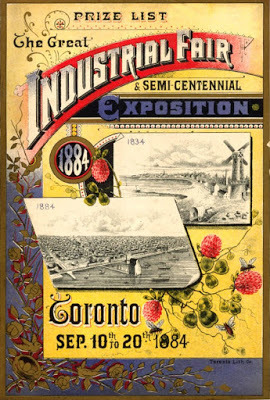Stephen Roney's Blog, page 220
October 3, 2020
Resolved: Philosophy Is Racist
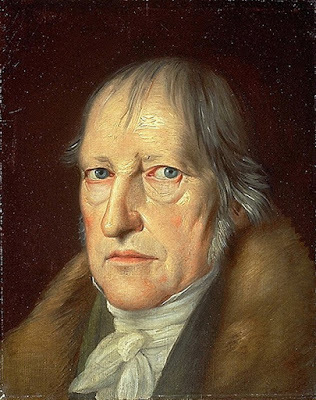 Hegel, hapless victim of his own racism.
Hegel, hapless victim of his own racism.We suddenly find ourselves in the belly of the beast: an essay explaining why philosophy itself is racist: “Philosophy’s Systemic Racism.”
Or at least it seems to claim to. Then it focuses on Hegel. So that the case, even if made, would appear to be not systemic racism, but individual racism.
But the inconsistencies or confusions of terms do not end there. The author calls “explicitly racist” the postulated view that “Black and Indigenous peoples the world over were savage, inferior and in need of correction by European enlightenment.”
Only one element of that statement implies racism: that black or indigenous people might be “inferior.” Savagery is not genetic; neither is being in need of correction. Yet these are all thrown together, as though one’s culture and one’s system of government were racially determined. An ideal justification for colonialism or indeed slavery, coming from the present author.
Does he go on to make a case that Hegel considered black or indigenous people inferior?
“Hegel certainly was an explicit racist. He believed, for example, that Black Africans were a ‘race of children that remain immersed in a state of naiveté’. He further wrote that Indigenous peoples lived in ‘a condition of savagery and unfreedom’. And in The Philosophy of Right (1821), he argued that there is a ‘right of heroes’ to colonise these people in order to bring them into a progress of European enlightenment.”
Nothing here implies racial inferiority. It implies that their social organization, their government, is inferior. By this logic I would be guilty of anti-black racism for saying the black slaves in the antebellum US South were being held in a state of unfreedom. And if I do not support the government of Michigan, I am an anti-Michigander racist. “Explicitly.”
At the same time that he condemns Hegel for supposedly thinking that indigenous social systems or culture were inferior to European ones, and calls this “racist,” he condemns Rousseau as “racist” for thinking that indigenous social systems or culture were superior to European ones. “Unlike Hegel, however, he thought that he was reading about people leading idyllic lives.” He then condemns Schiller as racist for thinking that European and indigenous cultures simply had characteristic strengths and weaknesses, and could learn from one another through contact.
On this basis, the only possible conclusion, surely, is that “racist” is simply for this author a synonym for “European.” Or, to use the racist term beloved of racial theorists, “white.”
'Od's Blog: Catholic comments on the passing parade.
October 2, 2020
There Are Children in the Morning

There seems to be a common belief out there that Leonard Cohen is politically on the left. After all, he’s an artist, isn’t he? All artists are on the left. As Andy Warhol once put it, perhaps plaintively, “artists just can’t be Republican, can they?”
There is immense pressure on artists to support the left. There has been since the 1950s, probably as a reaction to the McCarthy witch hunts, and it has only grown since. Today, anyone who admits a stray right-wing thought risks their livelihood. It is rarely worth it for an artist; their commitment is to their art, and politics is a minor concern for most by comparison.
We need an artists’ liberation movement. But the current cancel culture and blacklisting is probably soon going to swing everything around, because it is just like McCarthyism, yet worse.
As a result of this pressure, we can assume anyone not openly left-wing is secretly right-wing. Along with some who are openly left-wing.
And Cohen has always played his politics close to the vest.
It is clear, nevertheless, that he opposes abortion, and has always opposed abortion.
“Teachers,” from his first album:
“Some girls wander by mistake
Into the mess that scalpels make.”
“Story of Isaac,” from his second album:
“You who build these altars now
To sacrifice these children,
You must not do it anymore.”
“Diamonds in the Mine,” from “Songs of Love and Hate”:
“And the only man of energy, the revolution’s pride
He trained a hundred women just to kill an unborn child.”
“Dance Me to the End of Love,” from “Various Positions”:
“Dance me to the children who are asking to be born.”
And finally, “Thanks for the Dance,” the title track of his last, posthumous album:
“Thanks for the dance
I hear that we're married
One, two, three, one, two, three, one
Thanks for the dance
And the baby you carried
It was almost a daughter or a son.”
It has in fact been an abiding concern. I suspect it was, for Cohen, a core concern.
'Od's Blog: Catholic comments on the passing parade.
October 1, 2020
Insects of the World, Unite!
Anyone else remember “Bringing Up Father”? It was one of the old Sunday cartoon strips. It came up recently in discussion with a friend—as the origin of the Newfoundland traditional meal called “Jiggs’ Dinner,” aka corned beef, boiled potatoes, and cabbage.
But do you remember that the common theme of the strips was how Maggie bullied Jiggs? Up to and including frequent spousal abuse? She would club him with whatever weapon was at hand, and shout “Insect!”
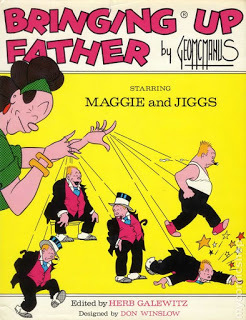
Can you imagine a strip showing a man doing that to a woman today? Indeed, can you imagine a strip showing a man doing that to a woman then? Equally unthinkable. Immediate imprisonment; loss of children, house, reputation, income.
Yet such abuse of men was apparently considered common enough, and laughable.
And come to think of it, it wasn’t just Maggie and Jiggs. Remember “Blondie”? Blondie and Dagwood? The original story was that Blondie was a flapper with expensive tastes and no love of housework, and Dagwood was a wage slave trying to keep her happy. She was always rousing him from the couch for chores on his day off.
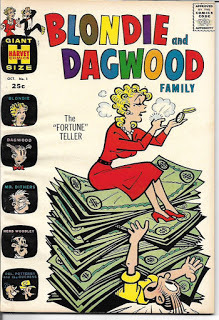
Or “L’il Abner”? Do you remember who dominated in the senior Yokum home? It was clearly Mammy. She could wrestle bobcats, and was entirely prepared to slug Pappy too. Men in general were understood as prey; remember “Sadie Hawkins Day”? Marriage existed for the benefit of women.
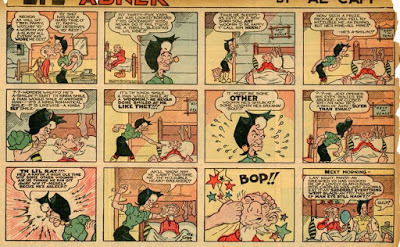
Same theme, for that matter, in “Snuffy Smith” or “Our Boarding House.” The wife was dominant.

This seems to support the unconventional thesis that, contrary to what feminism has long claimed, family life before the present time was at least as often as not dominated by the wife.
Was this, perhaps, simply a comic reversal of the usual situation?
Perhaps; but surveys consistently show that, in less developed, more traditional countries, women are happier than men. A man’s life is dirty, dull, and dangerous. A woman gets to stay safe and sheltered at home. That happiness gap, and a parallel gap in life expectancy, actually closes for the developed, post-feminist world.
I can also personally attest that in the case of my grandparents, on both sides, it was indeed the wife who was dominant in the home. She made the rules; the paterfamilias might be required to step out onto the porch if he chose to smoke. The same was true for my great-uncle and his wife. If you visited, he rarely was allowed to talk.
Perhaps the illusion of a former patriarchy is due to most of us not remembering anything before the Second World War. The war and postwar period was a special time, when people were in a party mood and the regular rules did not always apply. In part, I suspect the male of the species gained a good deal of prestige then, for the sacrifices and the heroism of the war. Women could see for a moment the value of men as protector. And as cannot fodder. At the same time, improved modern conveniences made it possible, for the first time, for young men to live comfortably without a woman present. Hugh Hefner claimed he invented the concept of the “bachelor pad” and the bachelor life, in the 1950s. Before that, it was, as the comics also attest, “Our Boarding House.”
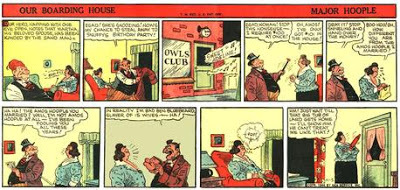
Women, if only briefly, lost or surrendered their traditional power over men. And, in the longer term, there was hell to pay.
Reparations, anyone?
'Od's Blog: Catholic comments on the passing parade.
September 30, 2020
The Great Debate
Perhaps the general consensus is that Joe Biden won the first US Presidential debate, simply by not losing it. Or forgetting where he was.
But setting low expectations aside, I think Trump won. Bigly.
It was surprising that he let Biden get away with the claim that he had called neo-Nazis “fine people,” and that he did not take the offered opportunity to unambiguously condemn “white supremacists.” No doubt this will flood the MSM with anti-Trump op-eds for several days.
But I think I see his strategy. He was not, under any circumstances, going on the defensive. If he could not turn it around into a quick attack on Biden, he was going to ignore it. He was going to be the Alpha, and make Biden look Beta.
That’s exactly what I think he did. He even made Chris Wallace look Beta.
And that’s, I think, what most people actually most want in a leader. You want a guy like that on your side. You don’t want to put your vital interests in the hands of someone easily steamrolled.
At the same time, had Biden tried to assert himself more forcefully, he would have risked looking out of control of his emotions, as senile people often are. Trump had him either way.
And, as always, Trump was relentlessly entertaining. That's a second important factor: politics is entertainment, especially in this era, and Trump understands that. Do the unexpected: keep them watching this reality TV series.
Trump is a brilliant communicator, and he knows his business.
'Od's Blog: Catholic comments on the passing parade.
Important Parts of Canadian Culture You Might Have Missed
The Newfoundland ugly stick.
Surf's up off Bonavista!
September 29, 2020
Leonard Cohen: The Early Years
Coming soon from a friend of mine, accomplished biographer and journalist Michael Posner.
He's previously done biographies of Mordecai Richler and Anne Murray.
Pre-order at this link: Leonard Cohen, The Early Years. Stories from a magical time, when Montreal was consecrated to poetry.

A Sea Route to the Orient
There is a bright possibility in Canada’s future, which, of course, our ruling elite is doing whatever they can to prevent.
Global warming.
The possibilities for expanded agriculture are obvious, for the second largest and second coldest nation on earth.
But here’s another opportunity: the Northwest Passage.
It was the original promise of Canada: a faster, shorter, route between Europe and Asia. Something more valuable year by year, as Asia develops. Currently, the best option is the Panama Canal. But an open passage over the top of Canada would be shorter, like the Great Circle Route favoured by the airlines, and would allow for far larger ships to pass.
Canadian port facilities built along the route could be an important economic boost—as being on the strategic Straits of Malacca bottleneck helps Singapore now.
Of course, aside from trying to stop global warming on conservative principle, the elite will object to large-scale shipping in the North because of possible spills and environmental damage.
Yet the same considerations ought then to shut down the Singapore Strait, the English Channel, or the Panama Canal. Do we worry about it there?
But what, you will say, of the livelihood of aboriginal people, if such damage occurs?
Probably no Inuit still survive by hunting on the ice floes. That is a romantic fantasy. Give them those port facilities, and they can have high-paying jobs instead of subsisting on welfare.
It could open up the Greater North to development.
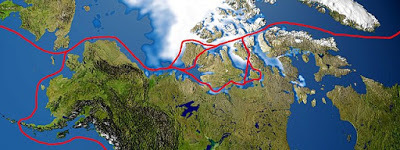
'Od's Blog: Catholic comments on the passing parade.
September 28, 2020
Hey, Kids, Let's Put on a Canadian National Exhibition!
Thanks to COVID-19, there was no CNE this summer: a depressing absence of a grand old end-of-summer Toronto tradition. Rumours are that it may fold forever from that financial hit. The fair that I attended in 2019 may be the last one. And even it was a smaller and less energetic affair than five years ago.
The CNE has mostly lost its reason to be: introducing the locals to the latest snappy consumer products. For years, the new car models were its centerpiece.
That seems no longer necessary. Television killed as lot of it; but at least TV was too expensive for many products. Advertising on the Internet, or finding products on the Internet, is in reach of all.
The CNE reinvented itself once. It began as an agricultural fair; as Toronto industrialized, it shifted to an industrial exhibition. If it is to survive, it needs to reinvent itself again.
Some will suggest that it needs to become more multicultural, to reflect the new face of Canada. It was all a relic of the “white” settler past. But another festival used to do that: Caravan. It died out due to lack of interest. Portuguese-Canadians do not need to go downtown to learn about their Portuguese heritage; and it began to feel a little too much like a human zoo.
I had a Greek-Canadian girlfriend. She would not let me go near the Greek pavilion. She found it too embarrassing. I had a Dutch-Canadian girlfriend. She would not let me go near an exhibitor at the local market wearing wooden shoes.
Here’s an idea: make it the Canadian National Exhibition.
What Torontonians most need now is better awareness of Canada. Most of Toronto today was born elsewhere. The government has put a lot of money into fostering “multiculturalism,” celebrating differences, and little into integrating new arrivals into Canadian culture, or fostering a sense of unity. Why not an annual celebration of Canada? It isn’t happening anywhere else.
This also means no exhibits celebrating only one ethnic group: no aboriginal pavilion, for example, and no francophone pavilion. Only those things we all at least potentially share.
The centerpiece could be a debate competition, featuring high school and university students. The traditions of civil debate, after all, are the foundation of our system of government.
The various political parties could sponsor exhibits around this.
There could be, in the same vein, a mock court, featuring law students or even working lawyers, presenting and arguing famous cases from Canadian history as a spectator sport. This could be a good way for newcomers to be introduced to Canadian legal norms and traditions, another essential part of our culture. It is often overlooked that, along with a common language, the various English-speaking democracies also share a common-law legal tradition.
The armed forces could exhibit their equipment and techniques, as they have been doing at the CNE. Nothing more fun for boys than sitting in a cockpit or climbing on a tank.
There should also be a shared police pavilion: federal, provincial, municipal. Nothing is more central to the Canadian identity than the Mounties; policing in general is central to the Canadian ideal of “peace, order, and good government.” And it is in everyone’s interest to foster good feelings between the police and the urban populace. Young people need to believe that the police are not their enemies.
There ought to be a royal pavilion. Canada is a monarchy, after all, the Queen is supposed to be a unifying symbol, and every immigrant in their oath of citizenship pledges her loyalty.
For the sake of our shared literary cultural heritage, there ought to be a Green Gables exhibit, a Mariposa exhibit, and a Klondike pavilion. Anne of Green Gables should be strolling around the grounds. Green Gables could reproduce sets and show costumes from the latest TV series; Mariposa could present dioramas and scale models of the imaginary town, and exhibits of small town Ontario life circa 1912. The possibilities for a Klondike pavilion are endless.
“Mon pays, c’est l’hiver”: one pavilion might be dedicated to the traditions of winter. Margaret Atwood identified winter as the essential unifying Canadian experience, and a “winter” pavilion was a standout at Montreal’s old Terre des Hommes exhibition. Hockey and hockey history should of course be a large part of it. Ideas for recreational opportunities in the winter, and how to make the most of the season: recent arrivals from other climes may have no idea.
There should be an exhibit on maple syrup: how it is made, and a selection of cuisine for sale. This might be part of a larger “Spring” pavilion, including something on identifying common local wildflowers and edible plants.
There ought to be a humour pavilion. Humour, for anyone who has not noticed, has always been a Canadian specialty. The “Just for Laughs” festival in Montreal is a wildly successful model. And getting the jokes is an essential part of fitting in, for a newcomer. Exhibits could feature classic political cartoons. Anthologized clips of Canadian humourists of the past could be shown: Mack Sennett, Wayne and Schuster, Dan Ackroyd, NFB animated shorts, and on and on. And, of course, live stand-up performances by young comics.
An art pavilion could feature the works of one important Canadian artist each year, assembled from various collections. Such exhibits could then go on the road to other municipal galleries in Canada throughout the subsequent year.
A music pavilion could showcase traditional Canadian folk songs, music, and dancing. Visitors could be given basic instruction in how to folk dance. A sing-along display could encourage attendees to “follow the bouncing ball” on folk songs, Canadian standards, and campfire songs, reviving an old summer tradition. This was Canadian karaoke before there was karaoke; a lot of Asian-born Canadians will take to it naturally.
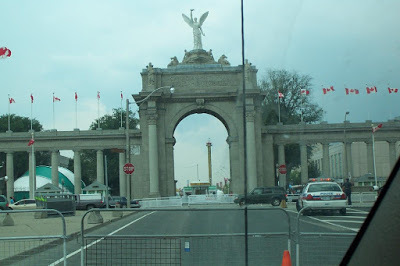
An outdoor screen could show classic and recent Canadian movies.
A resources pavilion might feature a display of Canadian minerals, something on the long history of forestry and the fur trade, exhibits on oil and hydro-electric power. Canada, with its huge territory, has always been all about natural resources, after all.
The grounds might be tied together, and footsore attendees accommodated, by a miniature railroad, in part commemorating the importance of the railroads in unifying Canada. Logos of various historic and present rail systems could be featured on the cars. Canadian Pacific, Grant Trunk, Kettle Valley Railroad, and so on.
Headliners at the stadium should of course be the biggest current Canadian acts. A tent on the grounds could feature a Cirque du Soleil performance nightly.
Another pavilion should promote the national and provincial parks: reminders for city dwellers of opportunities to escape into the great Canadian outdoors. Given the timing of the exhibition, at the end of summer, seeing fall colours could be the theme. Along with fishing, camping, woodcraft, and canoeing exhibits.
Concessions might offer any sort of food, but we might also have a food pavilion, as does the current CNE, featuring strictly Canadian specialties immigrants may never have tried. Pate Chinois, Jiggs’ dinner, Montreal bagels, fiddleheads, and so forth.
Essential funding could legitimately come from government, to undo some of the harm of multiculturalism policies over the years. Promoting national unity and a sense of citizenship is their legitimate concern. Private sponsors might also be interested in hosting many aspects of the exhibition: Canadian-branded companies like Hudson’s Bay Company, Tim Horton’s, Vachon, CP Rail, and so forth. Not to mention any other company who would like to be seen by Canadians as Canadian. Which is just about any company selling to consumers.
Living as I have for most of my adult life with immigrants and others hoping to move to Canada, I bet that such a CNE would be wildly popular, in particular, with more recent immigrants. It could also, unlike the current version of the CNE, be an immense draw for foreign tourists.
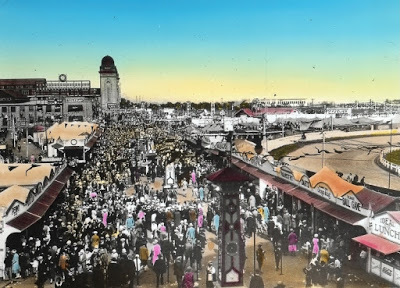
'Od's Blog: Catholic comments on the passing parade.
September 27, 2020
Hitler Confronts Trump
Carpool Karaoke with the Devil at the Wheel
In the New Testament, Jesus casts out demons from a boy who seems to be epileptic. Matthew 17:14-18.
When they returned to the crowds again a man came and knelt in front of Jesus. “Lord, do have pity on my son,” he said, “for he is a lunatic and is in a terrible state. He is always falling into the fire or into the water. I did bring him to your disciples but they couldn’t cure him.”
“You really are an unbelieving and difficult people,” Jesus returned. “How long must I be with you, and how long must I put up with you? Bring him here to me!”
Then Jesus reprimanded the evil spirit and it went out of the boy, who was cured from that moment.
Lucian of Samosata, a pagan Greek exorcist, dealt with similar cases.
“Everyone knows how time after time he has found a man thrown down on the ground in a lunatic fit, foaming at the mouth and rolling his eyes; and how he has got him on to his feet again and sent him away in his right mind.”
This is sometimes pointed to as evidence that the ancients simply misunderstood mental illness; there is really no such thing as demonic possession. We know, after all, that epilepsy is caused by physical damage to the brain.
But this does not explain how they seem to have believed they could cure it.
The long-distance diagnosis of epilepsy may after all be wrong. Falling down, rolling eyes, foaming at the mouth, jumping into the fire or the water—this also sounds like a child’s tantrum, magnified and taken to an extreme.
The thought is inspired by some recent TikTok clips of leftist women reacting to the death of Ruth Bader Ginsberg. They are throwing tantrums. And one of them, the woman with the short dark hair, the fourth in this compilation—you have a look.
What is a tantrum? It is when a person is completely under the control of some desire, some want, some urge. Not some emotion: that looks quite different. Someone overcome with sorrow, for example, will go entirely quiet. Someone overcome with fear will hide. Someone overcome with love will hug. This is desire, not emotion, a primal hunger, a violent assertion of self-will. But then again, it is more complicated than that: the desire seems to take over the will; the women in the video are no longer in control of themselves. Rather than self-willed, they may even be self-destructive: “I wish I had been aborted.” They might throw themselves into a fire, or break their own toys.
The easiest way to make sense of it is to understand this thing, this desire, as an independent will; which is to say, a possessing demon. It thinks and acts independently of the will, and controls it.
Hitler, they say, used to throw such fits. As is immortalized in a million memes.
We commonly nowadays call such possessed people “narcissists.” This is fairly apt. Narcissus himself, in the legend, was possessed by just such a demon, a lust towards himself, which was self-destructive. But he is perhaps more instance than ideal paradigm. We have been prejudiced in his direction as a vestige of Freud’s pseudo-biological fixation on sex as prime motive.
Possessed might be a better term. Such people might be possessed by any or all of the Seven Deadly Sins: pride, wrath, lust, envy, acedia, gluttony, avarice. All of whom are traditionally, and properly, understood as demons.
For two thousand years or so, Christianity has been here to keep such demons at bay. In the East, Buddhism has done the same work, beginning with the Noble Truth that such desires are the root of all suffering. All major religions no doubt do this work.
Now we have turned away from religion, and the demons run wild in the streets.
'Od's Blog: Catholic comments on the passing parade.

